The RBGE Archives do not just hold papers – correspondence, administration and photographs – we also have a number of objects; plant models, gardening tools and camera equipment for example. Inspired by BBC’s Antiques Roadshow’s visit to RBGE in July 2021, I spent a little time looking into what we could discover about one of our objects that briefly features in the episode due to be aired on the 3rd April 2022 – the telescope that apparently once belonged to the plant collector David Douglas.
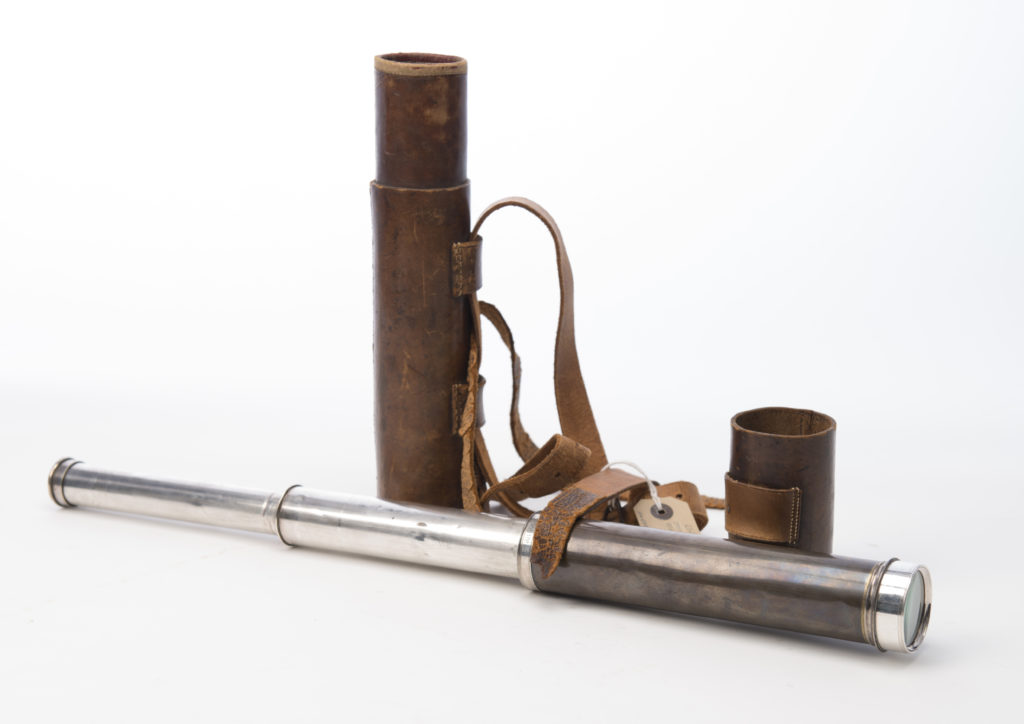
Who was David Douglas?
David Douglas was born in 1799 in Old Scone near Perth. Between the ages of 11 and 18 he was employed in the gardens at Scone Palace.
In 1818, after attending an evening school in Perth, Douglas went to the gardens of Valleyfield in Fife, the home of Robert Preston. From there, he went to the Botanic Gardens in Glasgow, where he was able to study under the tutelage of W.J. Hooker, who later went on to become the director at Kew – Douglas also accompanied him on excursions around Scotland.
In 1823, Hooker recommended Douglas to Joseph Sabine at the RHS as a botanical collector, and he was sent to New York to study apple trees.
He travelled to northern America again between 1824 and 1827 when he explored the area between Fort Vancouver and the Columbia River and across Canada via Edmonton.
In 1830 he travelled back to the Columbia River again, travelling to California in 1831.
In 1833 he left western America after resigning his post as collector for the RHS, at same time as Sabine resigned. Douglas then went to Hawaii, known at that time in the U.K. as the Sandwich Islands.
It was in Hawaii that Douglas met an untimely death in 1834, his body being discovered in a bull trap pit on Mauna Kea. He was believed to have fallen into the pit accidentally where he was gored by a bull that was already there, but some suspected he was murdered by Ned Gurney, a former convict from Botany Bay – the man who dug the pit.
Douglas is known for his introduction to science and horticulture of over 200 new species such as Ribes sanguineum– the flowering currant, but he’s better known for introductions of towering conifers such as Pinus lambertiana– the sugar pine, the ponderosa pine, the Sitka spruce and of course, the Douglas fir – named in his honour.
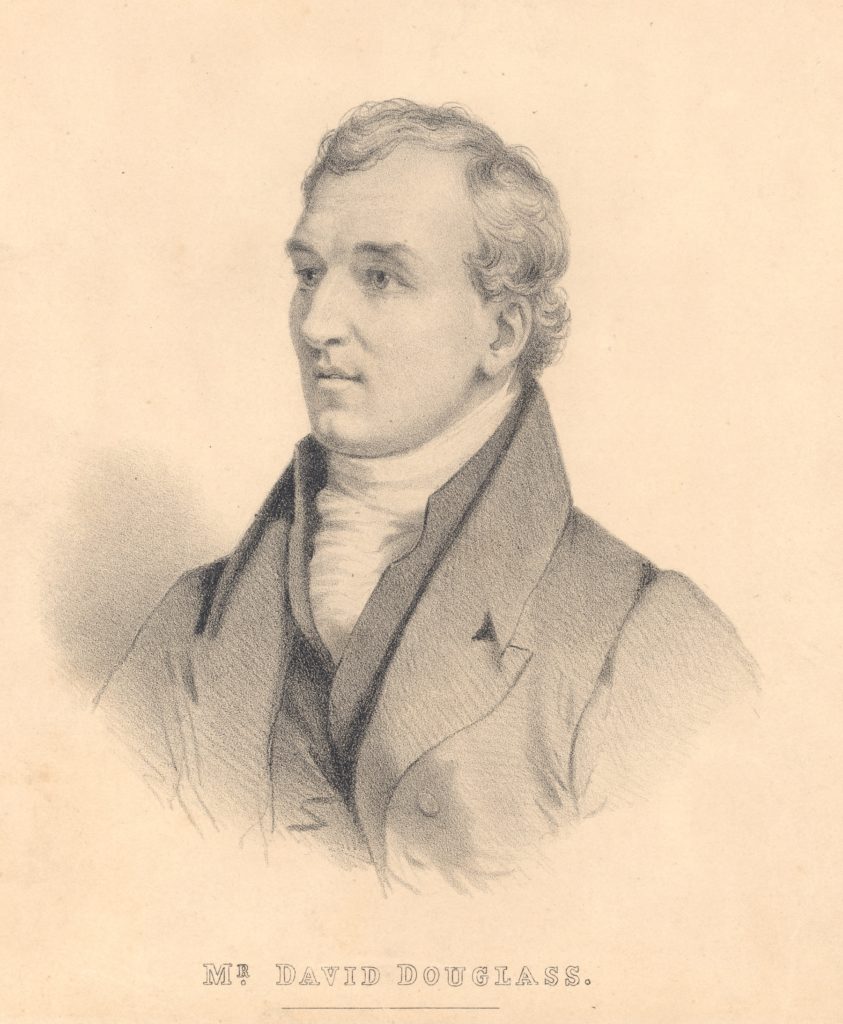
What is this object?
The object in question is a ‘three draw’ telescope (when the telescope is fully extended, three ‘sections’ can be seen to pull out from the draw case) made by Matthew Berge, along with its leather sling case; the inscription “Berge, late Ramsden” etched onto the telescope apparently dates it to between 1801 and 1805.
The telescope was given to Douglas by William Wells of Redleaf estate in Kent who had his and Douglas’s name inscribed on the telescope’s draw case: “From W. Wells Esq. to David Douglas”. According to one of the telescope’s former owners, Samuel Crosse, the telescope had been found in the bull pit with Douglas’s body. Apparently there had been a compass fitted in the sling case as well, but it had been smashed in the bull pit. Is this story true? We assume Samuel believed it, but there is no mention of a telescope or compass in the reports written in the aftermath of Douglas’s death, although Jean Greenwell’s article on Douglas’s death refers to Douglas surveying Hawai’ian volcanoes with his ‘glass’ (p.151).
After Douglas’s death, the telescope was sent to his brother George, who bequeathed it to his friend Samuel Crosse, who gave it to F.R.S. Balfour of Dawyck in 1920, who presumably passed it to RBGE, or it came to RBGE after Balfour’s death.
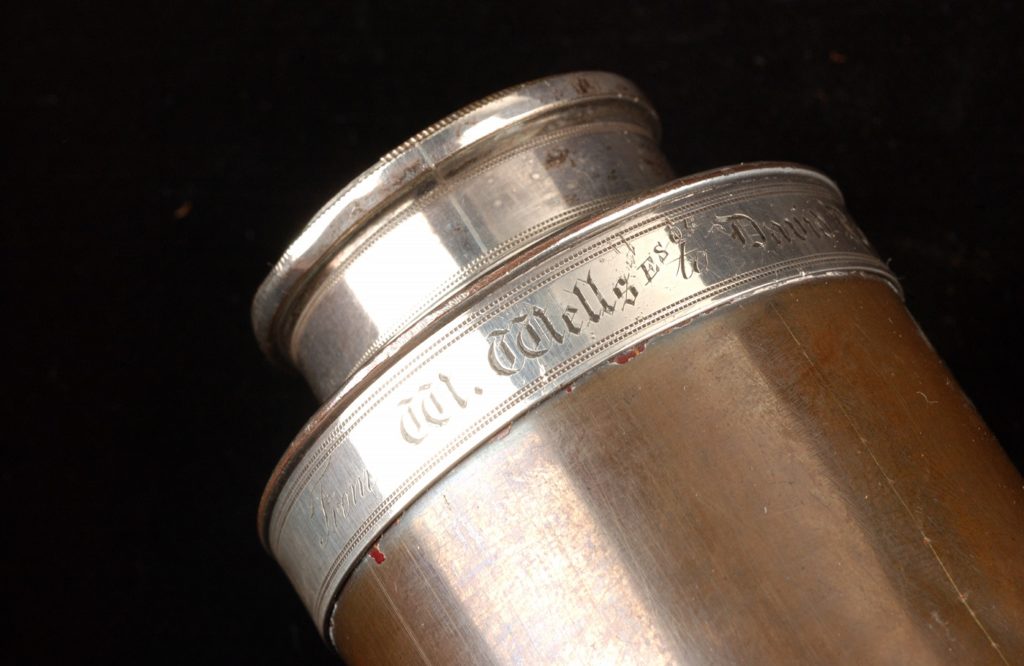
Who was William Wells of Redleaf estate?
William Wells (1768-1847) was a shipbuilder, engineer and art collector, becoming a major patron of Edwin Landseer. Prior to this he was a ship’s captain, commanding an East Indiaman to China and back for the East India Company at the age of 25. He then became owner of the Blackwell shipyard on the Thames which he sold in 1806 at around the time he bought Redleaf, a Georgian House and estate. His interest turned to collecting art and he became an early National Gallery trustee.
What do the Samuel Crosse letters tell us?
Two letters written by Samuel Crosse in 1820 and held in the RBGE Archives show us much of the provenance of the telescope and case, as outlined above. Crosse wrote to the Royal Botanic Gardens at Kew in April 1920, offering to sell them for £3 the telescope David Douglas’s brother George had given to him before his death 20 years before. We assume Kew’s curator replied at the beginning of May, and a day later Crosse posted the telescope not t Kew, but to F.R.S. Balfour of Dawyck along with a review of the Diary of David Douglas that Balfour had sent to him to read – the two had already shared correspondence about Douglas.
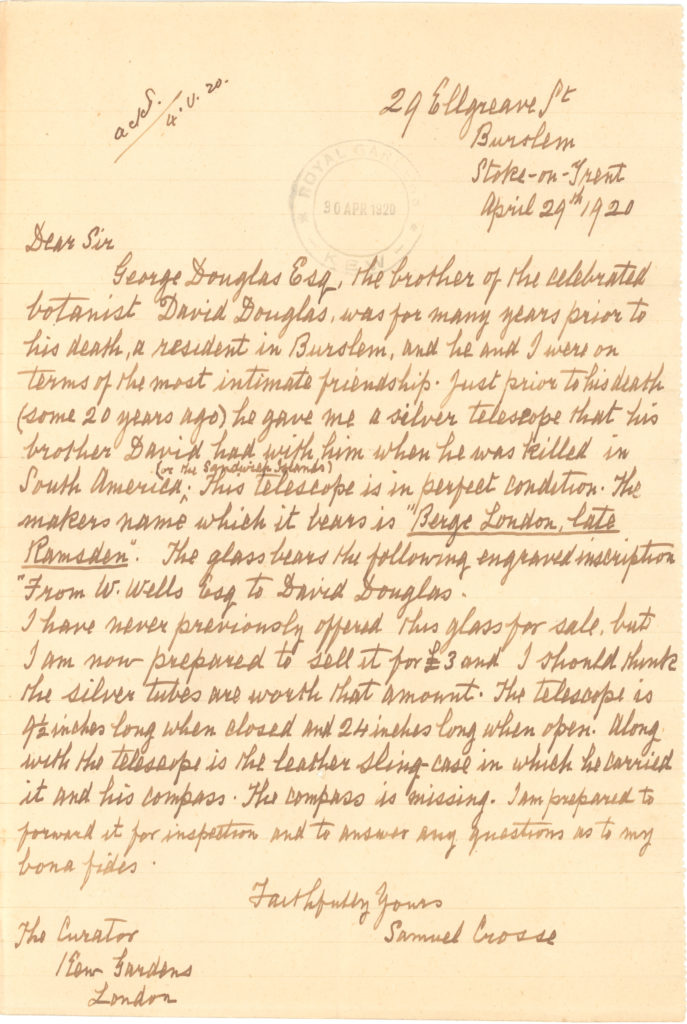
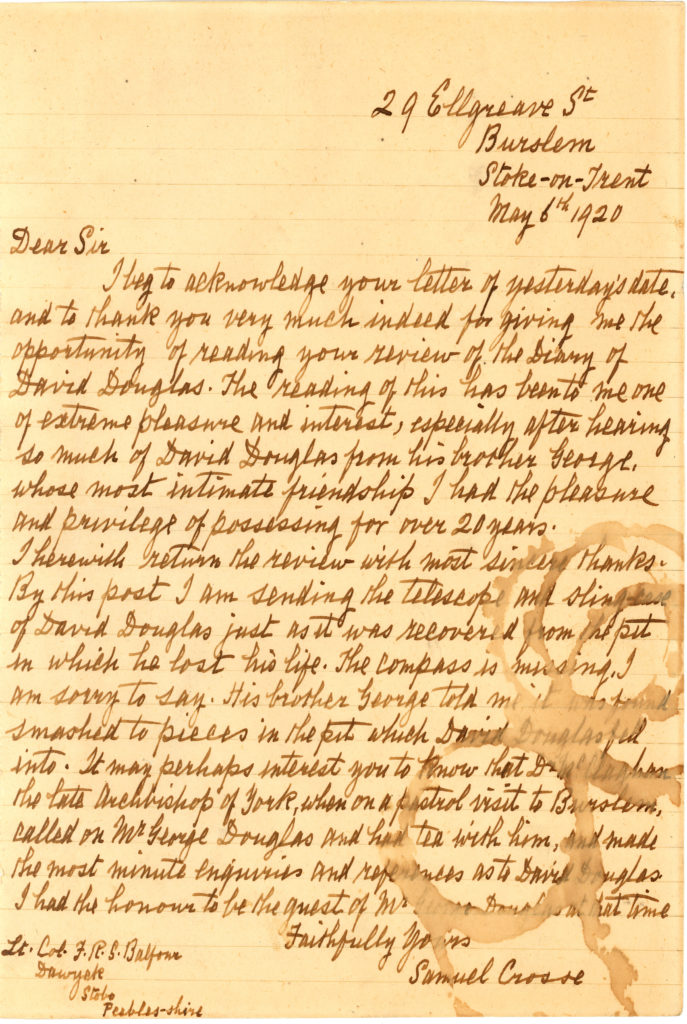
Did David Douglas work by himself?
Douglas depended heavily on local guides who were indigenous first nations Americans. He would draw pictures of conifer cones he was after, and guides would locate them for him. Douglas also depended heavily on networks and support established by the Hudson Bay Company and was aware of and concerned by tactics such as getting indigenous populations addicted to alcohol in order to manipulate cheap trades for local goods such as furs.
What links Douglas to RBGE?
There are no direct links between Douglas and RBGE as far as we know, but F.R.S. Balfour of Dawyck was a huge admirer of Douglas and himself followed in Douglas’s footsteps and collected trees and shrubs along the west coast of America. Many of Douglas’s introductions are still growing at Dawyck today. It is likely that it was this enthusiasm that led to the telescope being sent to Balfour by Samuel Crosse. Dawyck became one of RBGE’s regional gardens in 1979 and has a David Douglas trail and chainsaw carved statues dedicated to Douglas and his indigenous helpers.
